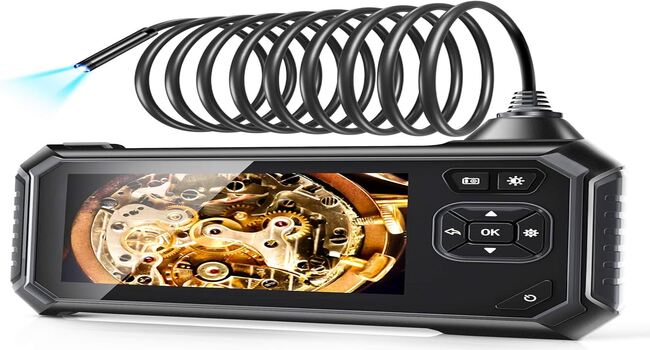Quality security is very important in the manufacturing world. Ensuring that products meet strict standards of excellence not only safeguards a company’s reputation but also guarantees customer satisfaction and safety. However, the complexity of modern manufacturing processes often presents challenges in identifying and rectifying defects effectively. This is where industrial borescope technology emerges as a game-changer, offering unparalleled capabilities in enhancing quality assurance protocols.
Industrial Borescope Technology
Industrial borescopes, also known as remote visual inspection (RVI) devices, are advanced optical tools designed to provide access to hard-to-reach areas within machinery and equipment. They are made up of a flexible or rigid tube with a camera and a light source inside it. This lets workers check the inside of parts without taking them apart. The images and videos captured by the borescope are transmitted to a display unit for real-time analysis.
The Evolution Of Industrial Borescopes
The development of industrial borescope technology has been marked by significant advancements over the years. Early iterations were cumbersome and limited in functionality, but rapid progress in optics, imaging, and materials science has led to the creation of highly sophisticated devices capable of delivering high-resolution images in challenging environments.
Applications In Manufacturing Inspections
Industrial borescope find extensive use across various sectors of manufacturing, including automotive, aerospace, electronics, and pharmaceuticals. Their versatility enables inspection of critical components such as engines, turbines, pipes, and circuit boards, allowing for early detection of defects, wear, corrosion, and other anomalies that could compromise product quality and performance.
Key Features And Benefits
Precision Imaging: High-resolution cameras are built into industrial borescopes so they can take clear pictures and videos even in tight areas. This precision imaging facilitates thorough inspection and analysis of components, ensuring that no defects go unnoticed.
Flexibility And Maneuverability: With their flexible or articulating probes, industrial borescopes can navigate through complex geometries and tight spaces with ease. This flexibility allows inspectors to reach areas that would otherwise be inaccessible, minimizing the need for costly dismantling of machinery.
Non-Destructive Inspection: Unlike traditional inspection methods that may require disassembly or destruction of components, industrial borescopes enable non-destructive testing (NDT), preserving the integrity of the inspected parts while providing valuable insights into their condition.
Real-Time Monitoring: The ability to view live video feeds from the borescope on a remote display unit enables real-time monitoring of inspections. This instant feedback allows inspectors to make quick decisions and take corrective actions as necessary, minimizing downtime and production delays.
Documentation And Reporting: Industrial borescope systems often come equipped with features for capturing and storing inspection data, including images, videos, annotations, and measurements. This documentation serves as valuable evidence of compliance with quality standards and regulatory requirements.
Case Studies And Success Stories
Automotive Manufacturing:
In the automotive industry, industrial borescopes are used for inspecting engine components, welds, and assembly lines. Manufacturers can avoid expensive recalls and make sure that cars meet strict quality standards by finding flaws early on in the production process.
Aerospace Engineering:
Aerospace manufacturers rely on industrial borescopes to inspect aircraft engines, turbines, and hydraulic systems. These inspections are critical for detecting fatigue, cracks, and foreign object damage (FOD) that could compromise the safety and reliability of aircraft.
Electronics Production:
In the electronics industry, industrial borescopes are indispensable for inspecting printed circuit boards (PCBs) and solder joints. By detecting defects such as shorts, opens, and voids, manufacturers can ensure the reliability and functionality of electronic devices.
Conclusion
The industrial borescope is a big step forward in quality assurance because it gives manufacturers the tools they need to keep up the greatest standards of product excellence. Borescopes help inspectors find problems early and make sure that manufactured goods are trustworthy and of good quality by allowing non-destructive inspection, real-time tracking, and accurate imaging of internal parts.
